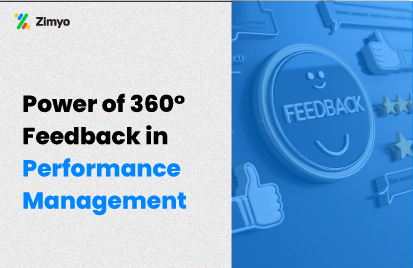It is seen that many companies claim Performance Appraisal to be a time-consuming and ineffective process even after spending a lot of time on it. But what they fail to realize is that these problems are associated with the Traditional Methods of Performance Appraisal used by them, which focuses more on measuring the past work of employees rather than improving their future performance. Over the years, a large variety of Performance Appraisal methods came into existence, some of which were more suited than others in meeting the demands of a dynamic business environment. As the times have changed, modern business organizations are gradually shifting to the new and much-improved methods that have revamped this process. So let’s have a look at Modern and Effective Methods of Performance Appraisal:
What is Performance Appraisal?
Performance appraisal refers to an annual or biannual process that involves the setting of quantifiable goals and objectives for the evaluation of an individual’s performance. It assesses the overall performance and productivity of employees according to the pre-determined targets for that particular year. The Performance Appraisal process also facilitates the evaluation of employees’ skills, specialization, and shortcomings according to which their wage raise and promotion are determined.
Modern Performance Appraisal Methods
Management by Objectives (MBO)
It is a process undertaken by managers to identify the objectives meant to be achieved by employees while giving each individual an area of responsibility in terms of results expected from them. These measures are further used as a guide for accessing the contribution of each employee in the organization. It is quite useful in determining productivity as it emphasizes career-oriented and tangible goals. This method is less time consuming and very cost-effective as compared to the other methods of performance appraisal.
Behaviorally Anchored Rating Scale (BARS)
BARS‘ method of Performance Appraisal analyzes employees’ behavior and way of working through which the overall performance of the workforce is assessed. It’s not been long since this method got developed and it is already claimed to be one of the most effective methods amongst all the Performance Appraisal methods. Behaviorally Anchored Rating Scale is a commendable combination of traditional and modern evaluation system guaranteeing precise results, due to which it is relatively more expensive than other methods. The Human Resource department plays important role in this process. The BARS method involves both quantitative and qualitative approaches, through which it succeeds in providing clear standards, improved feedbacks, and accurate performance analysis.
Critical Incident Method
There are certain events in an organization known as critical incidents. Through these incidents, employees are evaluated by managers under the Critical Incident Method of Performance Appraisal. Critical incidents can be any event where the employee might have done something great or something not so great. Under this method of performance appraisal, the evaluator is expected to maintain a digital or a physical journal to store the relevant information on different incidents. This method turns out to be very useful for an employee’s growth and the organization’s development.
360 Degree Feedback
The 360 Degree Feedback software is the tool of performance appraisal that collects employee feedback by those people who interact with him in the organization inclusive of his superiors, subordinates, and also customers. It might be a bit time-consuming but looking upon the benefits it has, it is worth a try. The feedback is generally in the form of a questionnaire designed to serve this purpose. This method motivates employees to perform the best of their ability to receive good feedback.
Assessment Centre Method
Assessment Centre Method of performance appraisal assesses employees’ performance in social-related situations. In this method, employees are being asked to take part in situational exercises aimed towards highlighting their specialization in the organization. It gives insights into the employee’s characteristics that are capable of influencing their success like business ethics, tolerance power, problem-solving skills, adaptability, team spirit, etc.
Psychological Appraisals
Psychological Appraisal Method of Performance Appraisal is very useful in the determination of an employee’s hidden potential as it focuses on improving his future performance rather than dwelling on his past work. Under this method, a variety of tests are conducted by qualified psychologists that include in-depth interviews, tests, and private discussions. It aims at identifying employees’ emotional, intellectual, and other related traits that can affect their future performance in the organization.
Conclusion
These Modern and Effective methods of Performance Appraisal have resolved all the issues of traditional performance appraisal methods. With the arrival of technology and the latest software, the Performance Appraisal process is no more complicated and time-consuming. Hence shift to the modern methods of Performance Appraisal System and multiply your employees’ productivity along with the organization’s growth.




